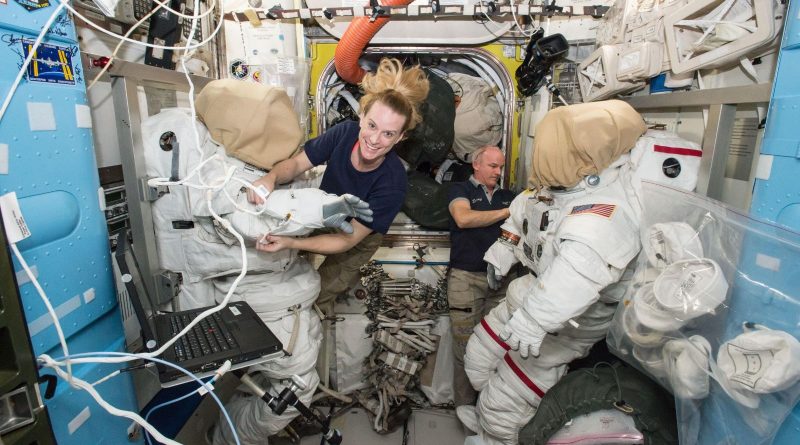Commercial Crew Docking Adapter to be installed on ISS via complex Robotics & Spacewalk
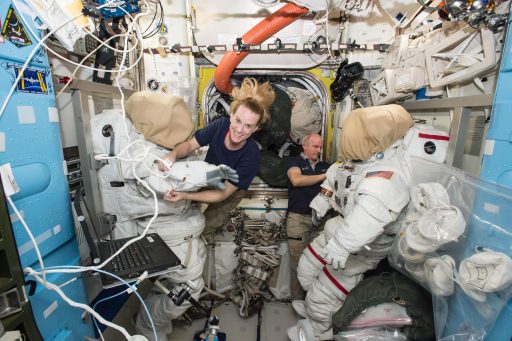
A critical docking adapter installation is on tap aboard the International Space Station this week with an ambitious task outline split between robotic work completed remotely from the ground and a spacewalk to be carried out on Friday by Station Commander Jeff Williams and Flight Engineer Kate Rubins.
International Docking Adapter 2 is to be installed on Pressurized Mating Adapter 2 to convert the docking port after being in use for 35 Space Shuttle missions to a usable port for upcoming Commercial Crew vehicles that are planned to begin flying to Station in late 2017.
The installation of at least two International Docking Adapters is critical for the remainder of the International Space Station’s life because they will allow any spacecraft using the International Docking Standard to arrive at ISS.
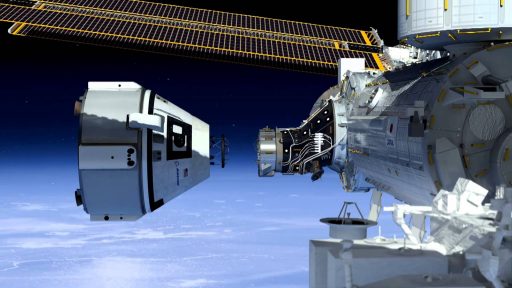
These spacecraft first and foremost include the SpaceX Dragon 2 and Boeing’s CST-100 Starliner that will take over crew ferry missions to and from ISS in 2018. However, the International Docking System Standard documentation is available to any government and private endeavor, allowing a variety of spacecraft to be built according to this standard.
NASA’s Orion spacecraft, while aiming for targets beyond Earth orbit, also uses this docking standard.
Per the current plan, International Docking Adapters will be installed on Pressurized Mating Adapter 2 that represents the forward point of the Space Station, and PMA-3 once it has moved from its current location on the Node 3 module to Node 2 Zenith, pointing up toward space while ISS is in its regular orientation.
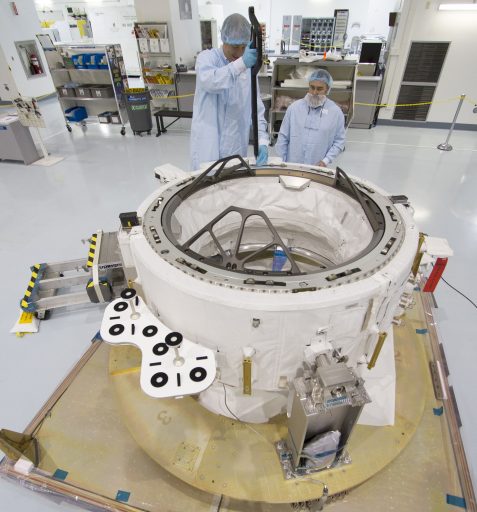
Well before the launch of the first Boeing-built IDA, work was underway aboard ISS to prepare for the conversion of the APAS-95 docking interfaces. In 2015, four spacewalks were conducted to complete the preparatory steps for the IDA installation, notably the routing of dozens of meters of cable to provide power and data connectivity to the IDAs and the spacecraft docked to them.
The first three EVAs were completed by Barry Wilmore and Terry Virts who had to move back and forth between the Destiny Laboratory Module and the future locations of the two IDAs to lay down a dozen cables that will carry power to the various IDA systems, deliver data for IDA commanding and connect the docked spacecraft to ISS power and data circuits.
Work was finished in December with a spacewalk by Scott Kelly and Tim Kopra who installed the C2V2 proximity communications system and finished the forward cable routing task.
Internally, the ISS crew placed control units and completed wiring tasks to be ready for the installation of the first IDA which will require a threefold effort from the robotics team on the ground, the spacewalkers outside ISS and the crew members inside the Station.
The first International Docking Adapter (IDA) was lost in the failure of the Dragon SpX-7 launch in June 2015 when the Falcon 9 rocket disintegrated just over two minutes into its flight due to a structural failure on the second stage. After the loss of the first IDA, NASA instructed Boeing to begin the construction of a third IDA from leftover parts to be ready to fly to ISS in late 2017 to take the position on PMA-3.
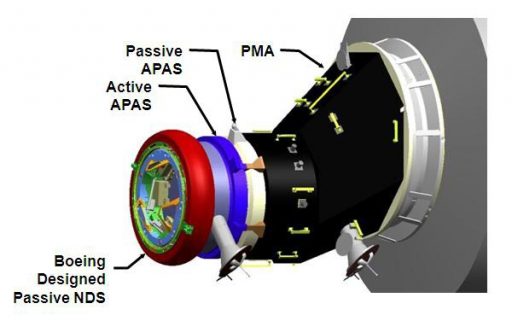
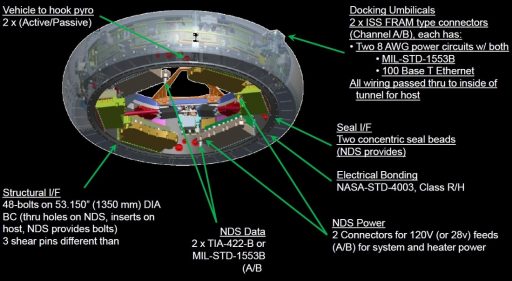
NASA developed rationale to allow the Commercial Crew Program to proceed even if only one IDA is present at ISS when Dragon and Starliner start flying – putting quite some pressure on the launch of IDA-2 aboard the Dragon SpX-9 spacecraft to keep up the Commercial Crew schedule.
Dragon lifted off from Cape Canaveral atop a Falcon 9 rocket on July 18 and was captured and berthed two days later, marking the delivery of vital science cargo as well as IDA-2 located inside the external Trunk Section of the Dragon.
The IDA is a relatively hefty piece of equipment, weighing in at around 450 Kilograms and facilitating an 80-centimeter tunnel the crew and equipment will pass through when transferring to ISS. On the backside of the IDA is an interface that complies with the active APAS standard to be able to mate with the Passive APAS on the Pressurized Mating Adapter while the front side hosts the passive interface of the NASA Docking System that is compliant with the International Docking Standard.
Preparations for the critical IDA-2 spacewalk began on July 25 when the crew retrieved the Extravehicular Mobility Units in use for the EVA – EMU #3003 will be used by veteran spacewalker Jeff Williams while first-time EV crew member Kate Rubins will use suit #3008. Both are recently refurbished suits and were prepared by the crew members to provide a perfect fit, verified via an ingress rehearsal on August 10.
Over the course of the last two weeks, the two spacewalkers refreshed on training received on the ground via procedure reviews and virtual reality software. Both crew members rehearsed the spacewalk at the Neutral Buoyancy Laboratory several times prior to launch – a rare luxury since most ISS spacewalks are performed on an on-need basis without much notice.
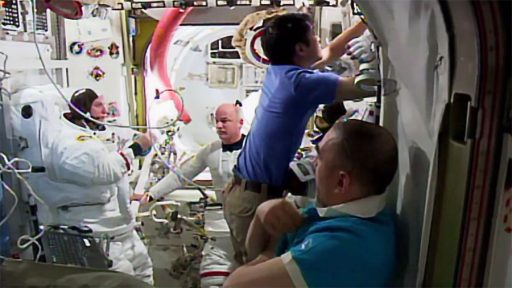
Equipment preparations included the setup of tools and tethers and the crew members spent time readying the life support systems of their EMUs to be in a good configuration well ahead of the big day on Friday.
On the ground, a last check of EVA procedures and potential contingency activities occurred as part of an ISS Mission Management Team meeting on Monday that provided the green light to press into the week’s busy schedule.
The installation operation of IDA-2 on PMA-2 is a twofold effort that picks up on Wednesday with the bulk of robotic work before Williams and Rubins egress on Friday to complete the structural and electrical integration of the adapter.
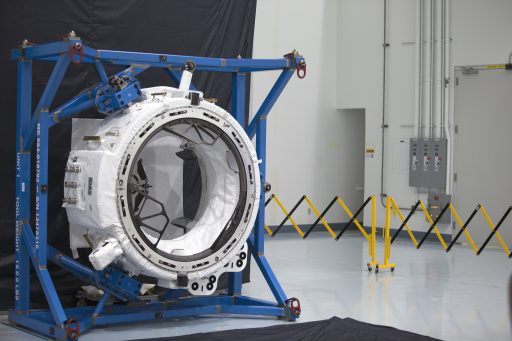
Enlisting the help of the 18-meter long Canadarm2 and the Dextre Robot, the ROBO Team on the ground will be tasked with grappling the H-Fixture of IDA inside Dragon’s Trunk. A previous video survey has verified that IDA was in the expected condition after launch and no problems are expected during its extraction from the trunk which will be performed very slowly once launch locks have been released to free up the IDA.
A series of pre-programmed maneuvers will follow to transition Dextre and IDA-2 to a standoff from Pressurized Mating Adapter 2. Teams will then work on the alignment of the IDA and slowly back it into PMA-2.
IDA-2 will be placed at a standoff of around half a meter until shortly before the EVA on Friday morning when the adapter will be pushed in to be in contact with the PMA.
Should any problems arise with the alignment of IDA, ROBO controllers will place the adapter to a closer standoff and rely on the crew for the final installation as part of a well rehearsed backup plan.
EVA-36 Procedure
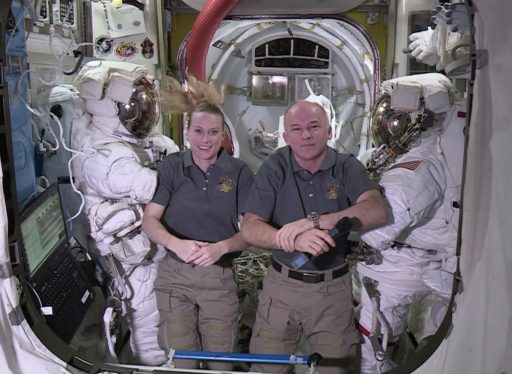
Starting out early on Friday, Williams and Rubins will enter the Equipment Lock of the Quest Airlock together with Takuya Onishi who will assist them with getting into their suits. As part of the pre-breathe protocol, the pressure inside Quest will be reduced to begin purging the spacewalker’s blood – removing nitrogen to avoid them suffering from decompression sickness.
Once both spacewalkers have ingressed their EMUs, the airlock can be re-opened and the crew will press into a 100-minute pre-breathe that features blocks of light exercise to accelerate their metabolic rates and help in the removal of nitrogen from the blood. The EV crew members will receive their tools and the CO2 scrubbers on the suits will be replaced before the spacewalkers head into the smaller Crew Lock portion of Quest where they will be sealed off for depressurization.
After the completion of leak checks, the airlock will be taken down to the vacuum of space to enable the crew to open up the hatch. Williams, a veteran of three prior EVAs, will be first to egress, wearing the suit with red stripes. He will receive an ORU Bag from Rubins before she also makes her way outside for the usual checks of the crew’s space suits before pressing into the actual EVA timeline.
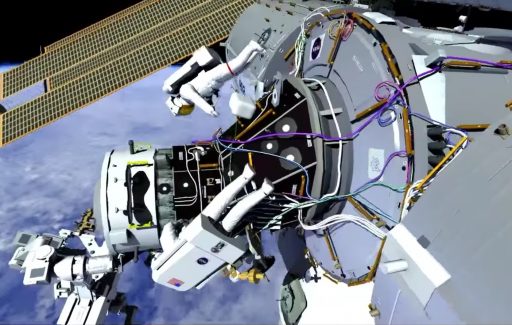
Rubins, wearing an all white suit, will complete a ten-minute translation adaptation in place for every first-time spacewalker to get a feel for the space suit in the vacuum of space as opposed to the water inside the NBL where she completed her training. Next for both crew members is a translation all the way to the front of the Space Station where PMA-2 resides.
At the PMA, Williams will stow the ORU Bag on the zenith side before retrieving a Articulating Portable Foot Restraint from the Columbus module to be installed in a Worksite Interface on the zenith side of the PMA. Rubins will place her foot restraint in the nadir side of the PMA.
With both crew members in position, the next step is the installation of Adjustable Equipment Tethers between the PMA and IDA to secure the adapter in place.
In case IDA-2 can not be positioned properly by the Station’s robotic duo, Williams and Rubins would manually guide it in place after release from Dextre.
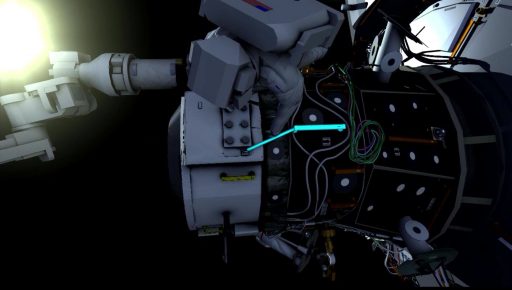
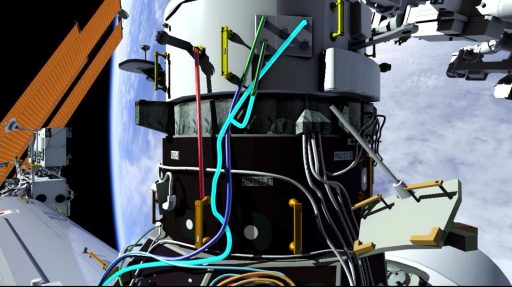
Once Dextre releases the adapter and is clear, the tethers will be tightened and the crew members can get to work with the tedious task of plugging the color-coded cables stowed on the forward end of PMA-2 into their respective sockets on the IDA. Rubins has to connect four cables while Williams has three to deliver heater power, hook drive power and sensor power to the IDA.
A GO will then be given to Takuya Onishi to command the IDA via a control panel inside the Destiny Lab which interfaces with the cables mated to the adapter by the spacewalking duo.
This will command a first set of hooks to close and structurally mate the IDA to the PMA, tightly pulling the two together and forming a tight seal. A second set of hooks will be driven as the crew moves on to their next tasks.
Williams and Rubins will cover up a pair of hemispherical reflectors on PMA-2 that were used by the Shuttle’s Proximity Navigation System and are replaced by two reflectors on IDA-2. To avoid reflections from the old ones confusing approaching spacecraft, they are simply covered up with a non-reflective cover bag.
Finally, the spacewalkers will remove the power from the hook drives once IDA is fully installed and place the power connectors to interfaces that deliver power to the visiting vehicle hooks before also installing the ISS-to-VV power supply.
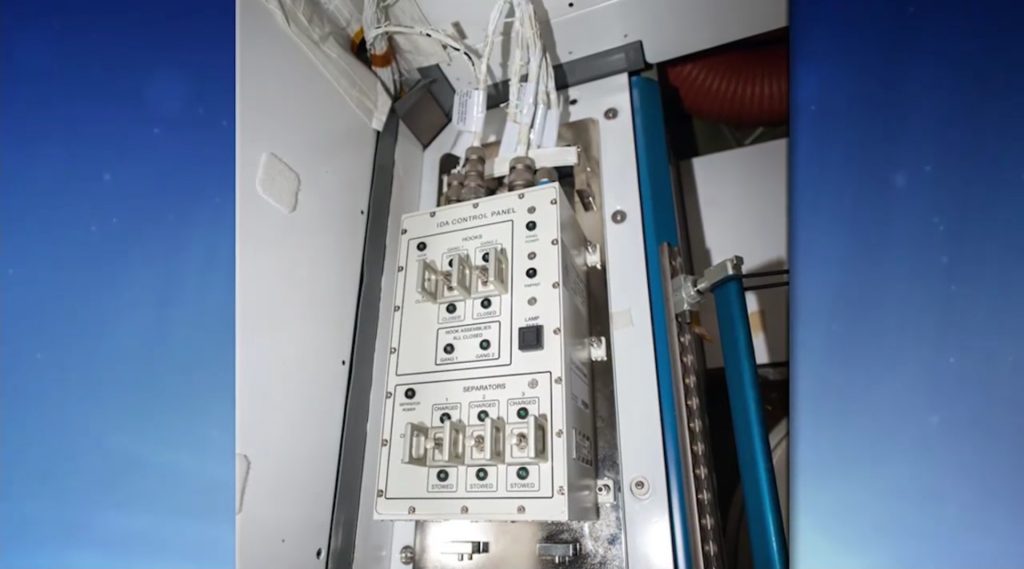
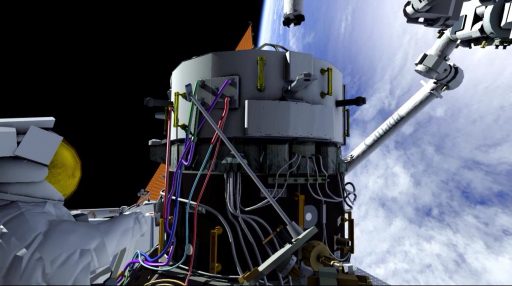
To clean up at IDA-2, the spacewalkers will remove the H-Fixture that was used by Dextre and take off a protective cover from the passive NASA Docking System on the front of IDA-2. Before departing the work site, the crew will place the two new hemispherical reflectors on IDA-2 to provide guidance for future approaching vehicles.
Leaving IDA-2, Rubins will return her foot restraint to External Stowage Platform 2 while Williams will position his APFR on Node 2 to be ready for the installation of IDA-3 in late 2017 or early 2018.
He will then return the ORU bag and make his way to what is known as the ‘Rats Nest’ – the area where the Lab, Node 1 and the Z1 truss intersect and a large amount of lines and cables are mounted. Picking up a cable bundle, Williams will make a series of connections on Node 2 and route the cables around the Z1 tray to a temp-stowage location on the starboard side for a future EVA. His last task will be the removal of a pair of connector caps just below Z1 to be ready for connections made in a future EVA.
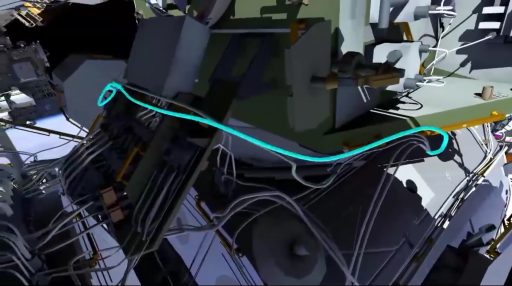
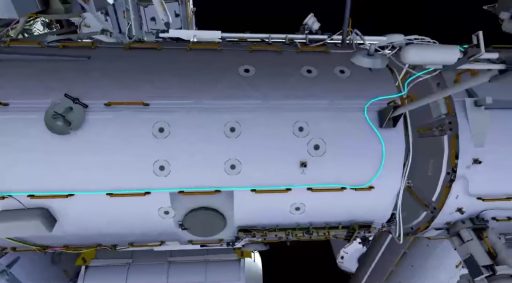
Kate Rubins will end her first EVA by moving over to the Destiny Lab’s nadir side, retrieving a green-white cable and routing it forward to Node 2 zenith where it will be placed for eventual attachment to IDA-3.
Based on the progress of tasks, the crew may perform up to two get ahead tasks – a brief reconfiguration of the Port CETA Cart by tying down brake handles, and the collection of engineering photos of the Alpha Magnetic Spectrometer’s outboard side that can not be surveyed by ISS video cameras.
Returning to the airlock, the crew will repeat their suit checks and make a tool inventory before climbing back inside and closing the hatch to set up for repressurization after what is likely to be a lengthy spacewalk.
Recently, Williams and Rubins had an additional EVA added to their flight plan by ISS Mission Managers taking advantage of a gap created by the delays of the Cygnus OA-5 and HTV-6 cargo flights. This EVA, currently on the schedule for September 1, will be dedicated to the retraction of the Trailing Thermal Control Radiator out on the P6 truss – a task that failed in a November spacewalk by Kjell Lindgren and Scott Kelly.

